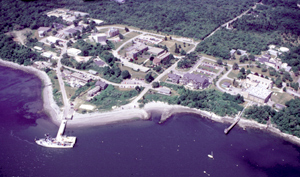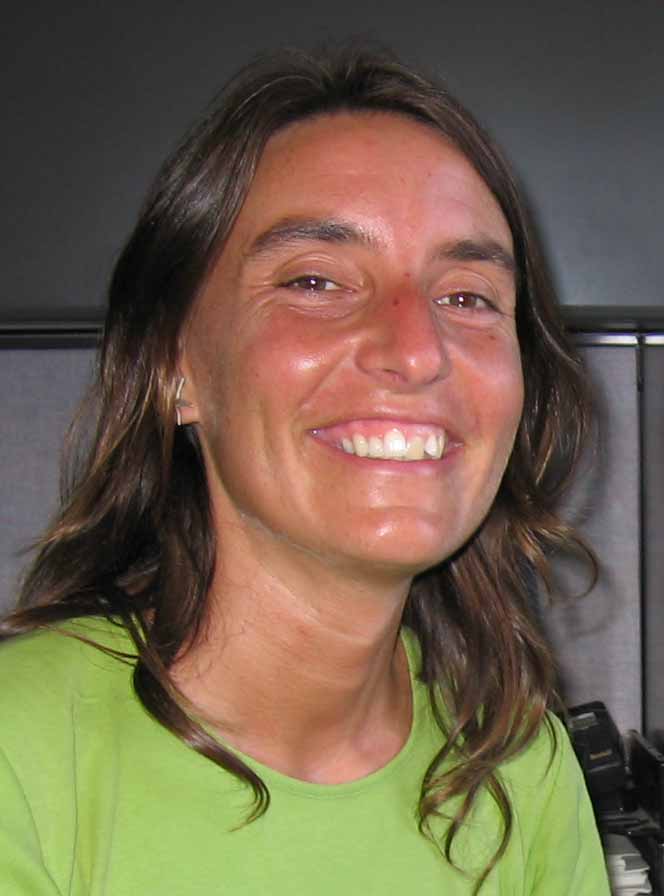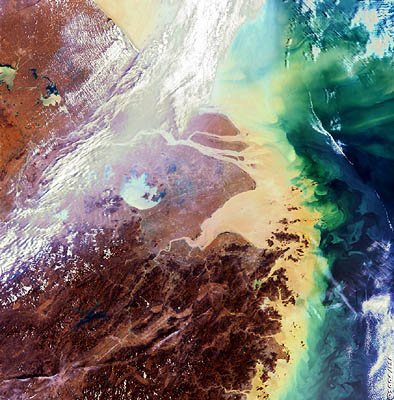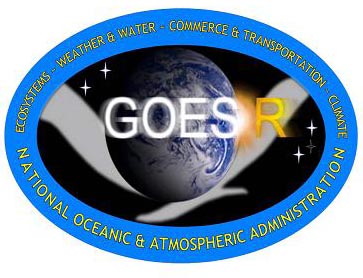

|
|
The IOCCG Ocean Colour Algorithm Working Group recently held a meeting in Hamburg, Germany from 11-12 July 2005. Dr. Roland Doerffer hosted the meeting at the Centre for Marine and Atmospheric Sciences, Max Planck Institute, and the meeting was chaired by Dr. ZhongPing Lee. Other participants included Drs. Hubert Loisel, Emmanuel Devred, Nick Hoepffner, Paul Lyon, Robert Arnone and Helmut Schiller. The main objectives of the meeting were to discuss the status of the IOCCG report being prepared by this working group. Various members of the working group have performed algorithm cross-comparisons using two large data sets of Hydrolight-simulated data (with and without the contribution of inelastic scattering), plus a large data set of in situ measurements (chl, remote sensing reflectance and phytoplankton absorption). Various empirical and semi-analytical algorithms have been applied to the data sets to test their performances. The results of these tests will be included in the IOCCG report tentatively entitled "Remote Sensing of Inherent Optical Properties: Fundamentals, Test of Algorithms, Applications". The report will stress the importance of inherent optical properties (IOP) in ocean colour remote sensing, and its usefulness either as an intermediate product, or as products for oceanography studies. Most of the discussions at the meeting were focused on broadening the applications of IOP. For further information on the activities of this working group, please consult the IOCCG Working Groups section of the IOCCG website.

The IOCCG Operational Ocean Colour working group, Chaired by Dr. Christopher Brown of NOAA, will be holding two workshops to discuss various aspects of the operational use of ocean colour. The first meeting will take place at the Graduate School of Oceanography, University of Rhode Island, USA from 20-22 September 2005 and a second workshop is scheduled for 8-10 November 2005 at the Joint Research Centre in Ispra, Italy. The goals of the working group are to promote the use of near-real time ocean-colour products and to facilitate the exchange of ocean-colour applications. The group will examine issues such as the problems associated with near-real time acquisition, processing, distribution and storage of ocean-colour data and products, the expansion of an operational ocean-colour user base and inter-agency differences in ocean-colour products. The main outcome of the working group will be the publication of an IOCCG report tentatively entitled "Why Ocean Colour: A Case for Visible Oceanography of the Ocean". The outline of the report and contributions by various authors will be discussed at the two working group meetings.
A warm welcome goes out to Mr. T. Srinivasa Kumar from the Indian National Centre for Ocean Information Services (INCOIS), Hyderabad, India who recently joined the IOCCG Committee. He will replace Dr. Shailesh Nayak of ISRO, who has completed his term of service on the Committee. Mr. Kumar also holds the position of secretary for the Indian Ocean Global Ocean Observation System (IOGOOS). We look forward to Mr. Kumar's participation over the next three years.

IOCCG Fellowship student, Carolina Campillo-Campbell, from the Centre d'Estudis Avancats de Blanes (CSIC-CEAB) in Spain, started her training this month at the University of Maine. She will be working with Dr. Andrew Thomas in the School of Marine Sciences. Over the next three months they will carry out multivariate and time series analysis of merged ocean colour (SeaWiFS, MODIS) and SST satellite data, for ecosystem characterisation in upwelling areas such as the Benguela Upwelling region off South Africa and Namibia.
Oceansat-2 is slated for launch in a near polar sun synchronous orbit of 720 kilometers by the Polar Satellite Launch Vehicle in the 2006-2007 time frame. With the launch of the Oceansat-2 mission, India will have the capability to cover many applications pertaining to the oceans including fisheries, coastal zone mapping, ocean process studies, inputs for operational numerical weather prediction and ocean state forecasting.
The UN-affiliated African Regional Centre for Space Science and Technology Education (ARCSSTE-E) is organising a 9 month Postgraduate Diploma Porgramme in Space Science and Technology Applications, beginning in January 2006, in collaboration with the Nigerian National Space Research and Development Agency (NASRDA). Further information can be obtained from Dr. O.O. Jegede Director of the centre (e-mail arcsstee@oauife.edu.ng) and the application form can be downloaded from the website: www.oauife.edu.ng/research/arcsstee.
|
 MERIS image of the city of Shanghai, on the south bank of the Yangtze River. Credit ESA 2004 ESA, together with the National Remote Sensing Centre of China (NRSCC), have created a dedicated three-year Earth Observation exploitation programme called Dragon (2004 to 2007). The Dragon programme focuses on science and applications development in P.R. China using mainly data from the ERS and Envisat missions. There are numerous Dragon Programme research themes, which range from flood monitoring, agriculture and forests, to seismic activity, oceanography and climate. The latest Dragon Symposium took place in Santorini, Greece between 27 June and 1 July 2005, and was attended by 120 scientists including 50 from PRC. Progress and early results were reported during the event and updates were given on project teaming, including Greek scientists joining as co-investigators. Supporting in-situ data measurements required to validate satellite results were detailed and reports were made from an associated young scientist training programme. Presentations included details of research being done into the synergistic use of ASAR with Envisat's optical Medium Resolution Imaging Spectrometer (MERIS) and also how ocean colour measurements made by MERIS can reveal marine phytoplankton populations, as well as suspended sediment. Researchers are building up a database of water optical properties as well as atmospheric correction for the region and developing a method of monitoring "red tide" events. MERIS is also being used to look at the estuary of the Yangtze River, whose waters have some of the highest sediment concentrations in the world. Teams are using Envisat's heat-sensitive Advanced Along Track Scanning Radiometer (AATSR) in conjunction with ASAR and MERIS to study the Kuroshio Current, which is the Chinese equivalent of Europe's Gulf Stream, flowing from the Philippines to northern Japan.

The reprocessing of the entire MODIS/Aqua data set has been completed through level-3 and all the products are now available for distribution via NASA's OceanColor Web. The main purpose for the reprocessing was to update the radiometric calibration coefficients for the ocean colour bands based on the most recent solar diffuser trends, and to incorporate the modified K_490 algorithm, along with other small changes. More detailed information regarding these changes is available on the OceanColor Web. This second reprocessing was necessary in order to address issues of consistency between the SeaWiFS and MODIS/Aqua data sets and to work out the procedures for handling the MODIS calibrations. The NASA Ocean Color Processing Group believes that, given the level of consistency between SeaWiFS and MODIS resulting from this reprocessing (5.1 for SeaWiFS and 1.1 for MODIS/Aqua), they will not need to reprocess either dataset anytime soon and they will start focusing their work on utilization of the 250 and 500 m bands for nearshore applications.

The National Oceanic and Atmospheric Administration (NOAA) National Environmental Satellite Data and Information System (NESDIS) Geostationary Operational Environmental Satellite (GOES) Program operate U.S. operational geostationary weather satellites. NOAA/NESDIS is currently developing the next generation of geostationary weather satellites (beginning with GOES-R, scheduled to be launched in 2012). GOES-R will include a Hyperspectral Environmental Suite that will have Coastal Waters imaging capabilities (HES-CW). HES-CW will cover the US territorial waters, nominally every three hours with selected regions hourly. HES-CW will have 14 spectral channels, and will sample at 300 meter resolution. HES-CW is still evolving but it is anticipated that it will provide valuable coverage of the properties of the coastal and shelf waters with the rapid update and 300 m spatial resolution afforded by a geosynchronous platform. The high temporal and spatial resolution data from HES-CW will help to detect, monitor, and predict harmful algal blooms, as well as permit the investigation of processes of the dynamic coastal ocean, such as tidal mixing. When used together with data from polar orbiters, HES-CW will permit the investigation of processes not possible with either platform alone. More frequent measurements will also effectively increase the number of cloud-free observations in a region of broken clouds through cloud filtering and compositing of multiple images.
Several new meetings have been added to the Workshops & Conferences section of the IOCCG website, including the AGU Fall Meeting which will take place from 5–9 December 2005, San Francisco, CA, USA. The special session OS03: Ocean Biology and Biogeochemistry: Discoveries From Space, convened by James Yoder and David Siegel, will be of interest to ocean colour scientists. The AGU/ALSO/TOS Ocean Sciences Meeting, 20-24 February 2006, Honolulu, Hawaii also has a number of ocean-colour related special sessions:
|
|
|
Material for possible inclusion in the IOCCG Newsletter should be submitted to the Project Scientist. Subscription to the IOCCG Mailing List.
|
|
|